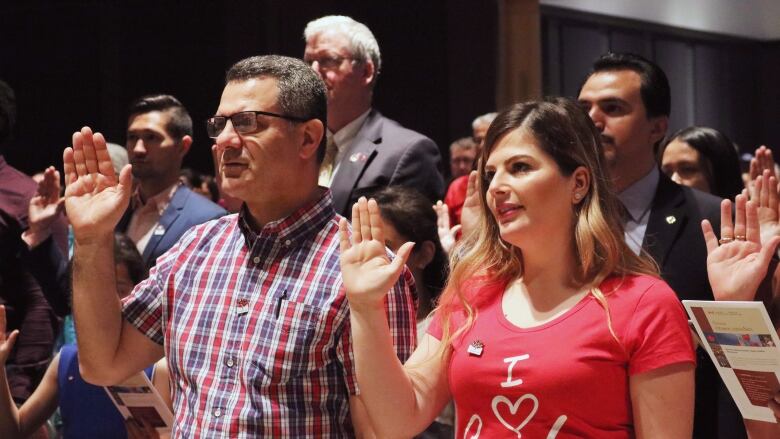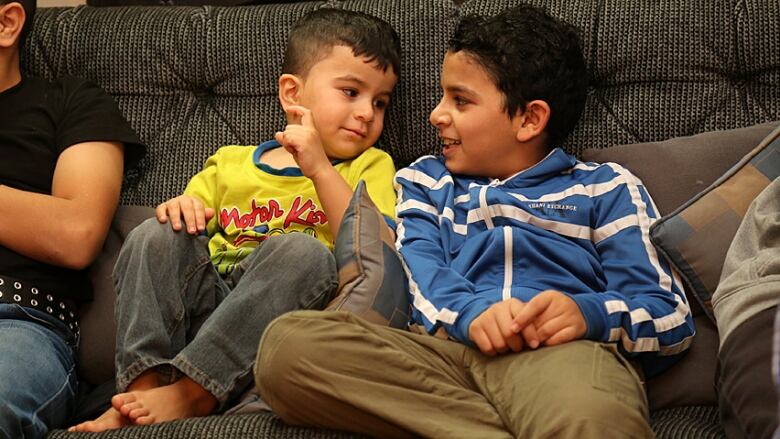Arabic overtakes Italian as top language spoken in Hamilton homes, after English
2016 census: Most non-English-speaking households in Hamilton speak a Chinese dialect

In Hamilton's non-English-speaking households, the single most spoken languageisnowArabic, overtaking Italian for the first time.
But statistics show immigration in Hamilton may still bewell below the provincial average, which a workforce analystfears could be detrimental to Hamilton's economy.
The newly released data from the 2016 census showhow demographics are changing in Hamilton's population, according to analysis by theSocial Planning and Research Council (SPRC) of Hamilton.
Italian-speakers have declined by about 34 per cent since 2006,largely due to anaging population. Meanwhile the percentageof thosewho speak Arabic at home has grown by about 60 per cent, to about 5,210 households.
That's almost twice the number of homes as the ones where French is the primary language spoken at home, which isshowing a similar rate of growth nonetheless.
Also declining are the proportion of people who speak Polish, Portuguese and Serbian.
On the other hand, showing significant growth are the proportion of thosewho speak Spanish at home, by about 53 per cent, and those who speakTagalogat home, by about 89 per cent.
An indication Hamilton's immigration numbers either stalled or declining
But despite the encouraging rates of growth,the numbers themselves indicate that the city's immigration numbers are either stalled or declining.
"Often Hamilton has been seen as an immigrant community, but that's in the past," saidthe SPRC's Sara Mayo.The city's immigration numbers have long hovered below the provincial average.
"Ontario's immigrants are just not choosing Hamilton as much."
The surge in Arabic speakers does not come as a surprise, Mayo said.

"Even before last year's influxof Syrian refugees, we knew that there has been an increase in immigrants from the Middle Eastfor quite a while."
Of the 12 per cent of Hamilton households where English isn't the primary language, the vast majority speak Mandarin,Cantonese or some Chinese dialect, with Mandarin just edging out on top.
Since the census form records open answers, the exact number for each dialect is vague. A total of 5,305 respondents said they speak aChinese dialect at home.
English-speaking households are up
StatsCan released the data on Tuesday, sayingalmost7.6million Canadians reported speaking a language other than English or French at home in2016, more than 14.5 per cent more than in 2011.
Moreover, the proportion of the Canadian population who speak more than one language at home rose from17.5 per centin2011to19.4 per cent in2016.
"Home languages are really important for service providers to determine what languages they should be providing services in, especially (to reach) newcomers who aren't as integrated into community services," explained Mayo.
A greater share of Hamilton households speaking English at home
Census data also reveals that more and more Hamilton householdsare speaking English at home, up to 88 per cent in 2016. This is up from theprevious longform census in 2006, which recorded 85 per centof families speaking primarily in English at home.

According to Mayo, the numbers follow a trend that researchers have long noticed, that there's a smaller number of households where other languages are the primary ones.
"Betweenthe '50s and '70s, there were huge rates of immigration, especially from European countries, and now that's changing," she said.
With the removal of the Enemy Alien Act in 1947, and following the industrial boom that saw Canada needing more labourers and workers, Italian immigrants came to Canada in record numbers.
Between 1946 and 1983, it is estimated that around 500,000Italians came to Canada, and with many settling in Hamilton, the city benefited economically as a result.
Hamilton's population now older than average for Ontario
But these numbers have been down for a while.From 2006 to 2011, Hamilton's immigrant population grew by only 2.9 per cent while Ontario's went up by4 per cent.
And while the latest immigration statistics fromlast year's census won't be available till November, the language trends do not look encouraging. And that's a problem, says Mayo.
"Part of what we think of as a strong economic period for Hamilton was very much due to immigration. We were attracting immigrants who didhard labour in all sorts of industries, especially steel," she says.
"Hamilton right now has an older population than the average for Ontario, and less immigration, so we need immigrants to increase our growth rate and economy."












_(720p).jpg)


 OFFICIAL HD MUSIC VIDEO.jpg)
.jpg)



























































































